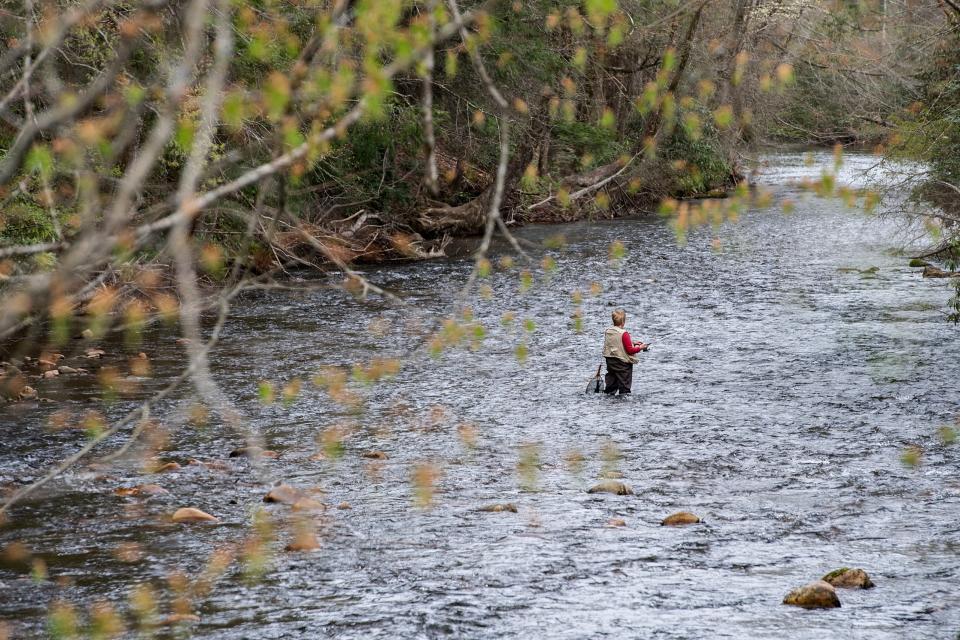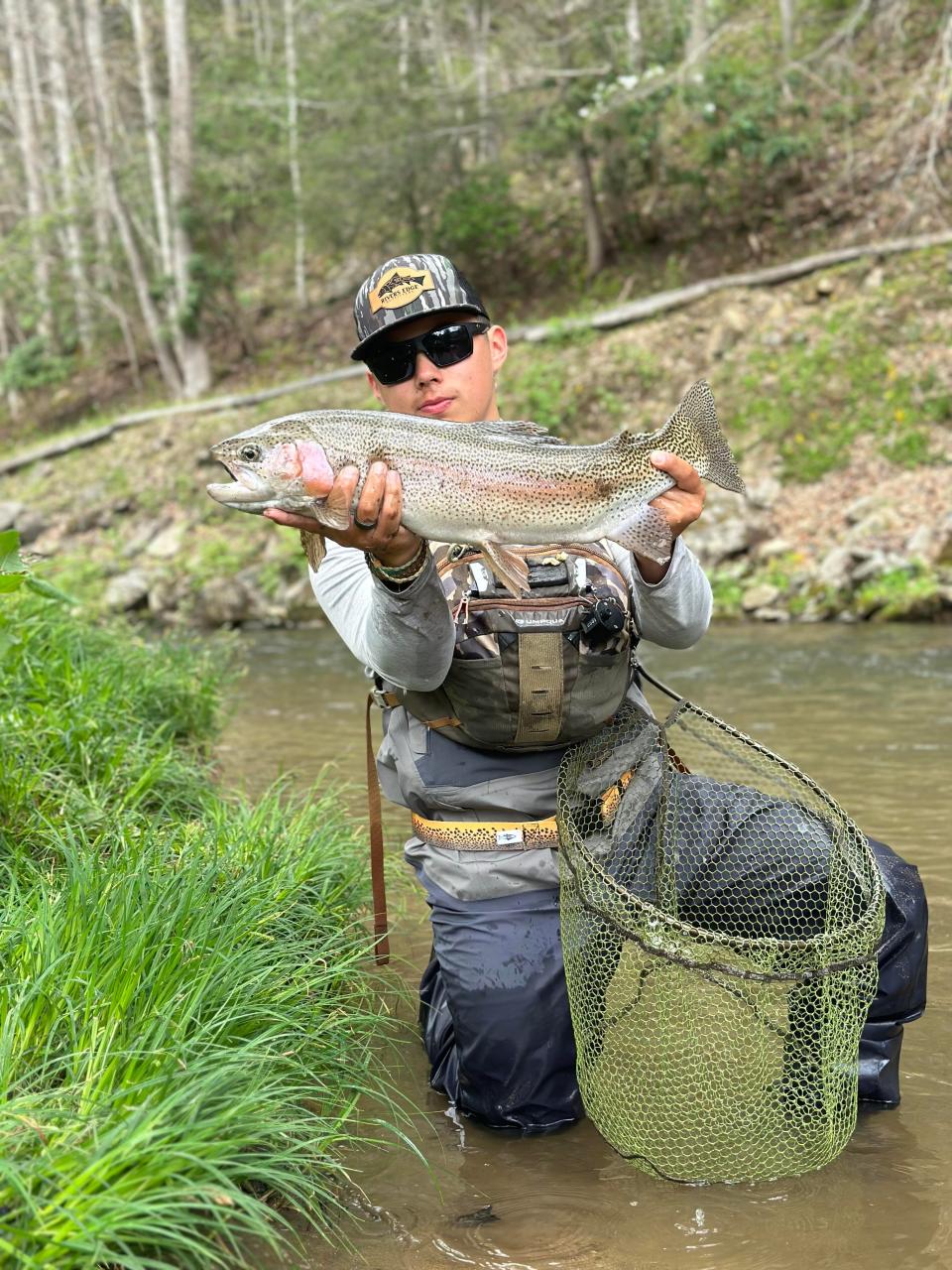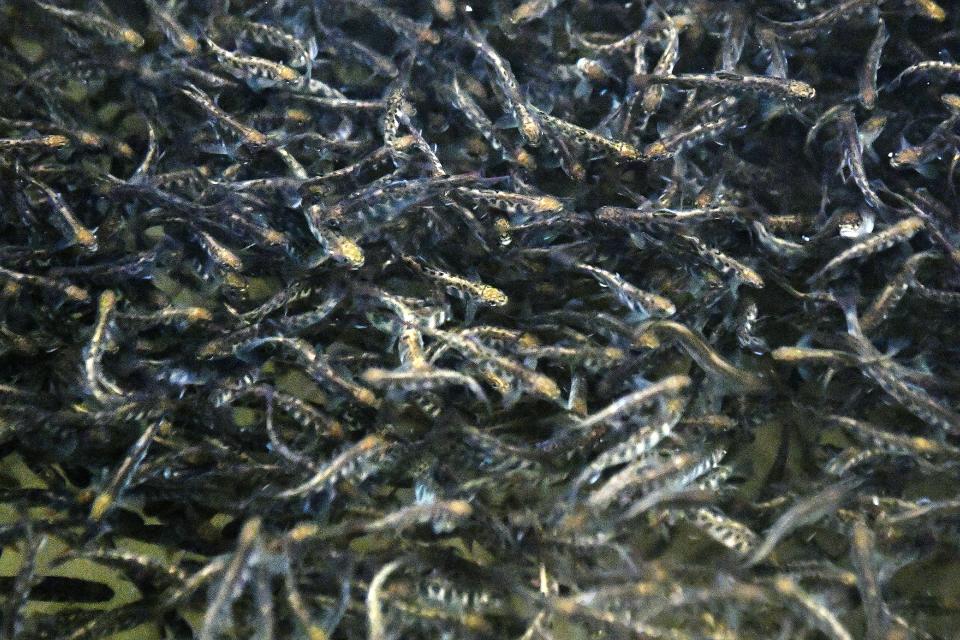Asheville named 1 of best fall fishing destinations in country for 2023
ASHEVILLE - With some of the best opportunities to see colorful foliage, Asheville's fall season might not only be the peak time to see leaves turn, but peak time to drop a line and catch a fish.
With easy access to regional streams and beautiful fall foliage, Asheville was rated as one of the top nine locations in the country for fall fishing by FishingBooker, an online boat chartering and fishing service.
In naming Asheville one of its top choices, FishingBooker calls it a "charming city" in the Blue Ridge Mountains, at the intersection of the French Broad and Swannanoa rivers.
"These two rivers, but particularly the French Broad, offer great Smallmouth Bass fishing, with fall being a superb time to reel in some big ones. Or, you can take a short ride to Lake James. There, you’ll also find a remarkable Smallmouth bite, with the addition of Largemouth Bass and the elusive Muskellunge," the post reads.
"At the same time, the Asheville region also features endless mountain streams, nearly all of which are inhabited by trout. The top locations include Newberry Creek, Davidson River, the east fork of the French Broad River, as well as Wilson Creek. All of these are absolutely abundant with Rainbow and Brook Trout, especially in spring and fall."

Paul Kisielewski, founder of the Asheville-based Southern Appalachian Anglers guide service, said the fall fishing season has a clear appeal.
"I think the appeal, obviously, is you are in the mountains, the beautiful color of the leaves, the weather and cooler mornings," Kisielewski said.
However, the diversity of fishing, where interested anglers can look to catch smallmouth bass alongside fishing for trout comes as another benefit, Kisielewski said.
More: Trout hatchery renovation to bring more trout, hellbenders to WNC region; feedback sought
"We do trout year-round but small mouth, you can still catch them in the winter — you are just not going to catch as many," Kisielewski said. "But this time of year is phenomenal. September, October and early November is an awesome time to go on a trip."
Ethan Hollifield, head guide and general manager for Southern Appalachian Anglers, said that along with catching fish, the season provides a good opportunity to learn about their habits alongside being aware of your impact on the environment.
"Our mindset is we're taking from this resource a little bit, even if we do practice catch-and-release and pick up all the trash we see — we're still having, in some cases, even a negligible impact on the environment," Hollifield said.
"When we take people out, not only do we try to teach them how to fish — we try to teach them as much environmental knowledge as we can about how things are or why things are the way they are," Hollifield said.
Examples of the educational opportunities come with understanding why trout exist in these waters, along with providing understanding how trout can be good bioindicators for water quality, Hollifield said.
More: Delayed harvest trout fishing season in WNC to proceed despite deadly August flooding
Fall fishing brings quality experience, delayed harvest
The fall fishing experience is not exclusive to Asheville's streams and rivers.
For AJ Allison, a guide with Rivers Edge Outfitters in Cherokee, one of the biggest aspects of fall fishing in the area are the leaves changing — and then falling.
"You've kind of got to deal with the leaves starting to come off, so you're catching more leaves than fish sometimes," Allison said jokingly.
Allison has only been fly fishing for a few years but attributes the quality of streams in the area — along with time during the pandemic — for his quick rise to becoming a guide.
"In Cherokee, I think we have some of the best waters in North Carolina. Period," Allison said. "I had a lot of practice really quick — just going all the time — because that's all I could really do during COVID."
Smallmouth bass, rainbow trout and brown trout are some of the most common fish to catch in the area. Brown trout, Allison said, are often coveted by those visiting the area.

"We get people where that's all they want to catch — a 20-inch wild brown," Allison said. "I think that's one of the most difficult things to do. I think I've caught three wild browns over 20 inches. I mean, that's fishing probably 200-something days out of the year."
Hollifield said one of the benefits of the seasonal delayed harvest is that the fishing is easy even for newcomers.
"What they are doing is that they are providing opportunities for people to catch trout that otherwise might not have them," Hollifield said.
While Buncombe does not have delayed harvest streams, neighboring counties Haywood, Henderson, Madison, McDowell and Yancey all include options to fish delayed harvest streams.
"It's a great place to take first-timers and kids and things like that," Hollifield said.
A full list of delayed harvest locations in Western North Carolina can be found at ncwildlife.org/Portals/0/Fishing/Images/2023/Delayed-Harvest_2023.pdf.

Hatchery expansion will add more trout for WNC streams
In 2022, trout fishing alone brought $1.38 billion to the North Carolina economy, according to the U.S. Forest Service.
In September, the Forest Service, in partnership with the N.C. Wildlife Resources Commission, announced a search for feedback on renovations to the Bobby Setzer Hatchery in Transylvania. The hatchery experienced extensive damage after Tropical Storm Fred in 2021.
The expansion of the hatchery will likely increase trout production, while reducing "the stress on the fish" improving health, growth and survival, said wildlife commission spokesperson Anna Gurney in a September email to the Citizen Times.
As for future fishing seasons, Gurney says it shouldn't affect any fishing season, as the wildlife commission aims to find fish to substitute any losses.
"The hatchery will be shut down to rebuild the hatchery building and raceways, trout production will be reduced. We are currently working on options for obtaining trout to help fill the gap. Changes in fishing seasons are not anticipated, and the Commission is making efforts to limit the effect on anglers," Gurney said.
More: WNC hatchery-supported trout waters to close for restocking; some license sales jump 94%
More: Land trust conservation work critical for water, wildlife, health
Will Hofmann is the Growth and Development Reporter for the Asheville Citizen Times, part of the USA Today Network. Got a tip? Email him at WHofmann@citizentimes.com.
This article originally appeared on Asheville Citizen Times: Asheville named 1 of best fall fishing destinations in United States

